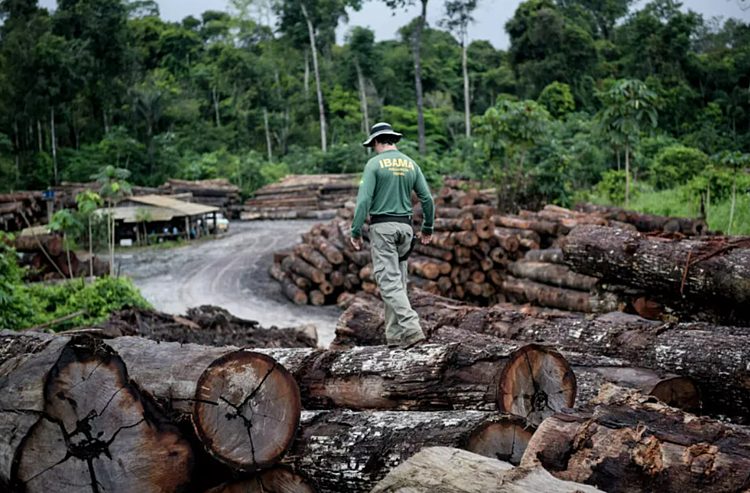Illegal logging in Pará, northern Brazil, increased by 22% in one year, according to data from the Logging Monitoring System (Simex, in Portuguese) released on Friday (16). Between August 2022 and July 2023, wood was illegally extracted from 28,100 hectares of land in the state, an area larger than 23,000 soccer fields. In the previous period – from August 2021 to July 2022 – 17,800 hectares of forest were turned into illegal wood.
The area of authorized exploitation of wood also increased, rising from 20,600 hectares between August 2021 and July 2022 to 30,200 hectares in the following period. “Legalized activity needs to be done sustainably, generate jobs and pay taxes,” explains Dalton Cardoso, a researcher at the Amazon Institute for Man and the Environment (Imazon, in Portuguese). He points out that two out of every five hectares of timber extracted in Pará are illegal, “which generates environmental damage, threatens traditional peoples and communities and weakens the wood trade sector”, he says.
Most of the irregular activity takes place in areas registered in land registry systems, such as the Land Management System (Sigef, in Portuguese), the Rural Environmental Registry (CAR, in Portuguese), the National Property Certification System (SNCI, in Portuguese) or the Terra Legal Program. These rural properties are responsible for 72% of illegal logging in Pará.
When analyzing the data, the institute works with four categories of land occupation: protected areas; undesignated land and cartographic voids; registered properties; and settlements.
In the settlements, illegal logging increased from 5% between August 2021 and July 2022 to 14% in the following period. “This growth may have been the result of both invasions and the lack of adequate assistance to carry out community forest management, a sign of the need for public measures that can protect and develop sustainable production in these territories,” says the researcher.
In undesignated lands and cartographic voids, illegal logging fell from 15% to 10%; in protected areas, such as conservation units and Indigenous lands, the percentage of illegal logging fell from 6% to 4%. In the latter category, the Amanayé territory stands out: it responded to 92% of the illegal wood extracted from protected areas in Pará in the most recent period.
The territory was recognized in 1945 and is registered in the system of the National Foundation for Indigenous Peoples (FUNAI, in Portuguese), but it is still awaiting approval. The area of illegal logging in the Indigenous reserve between August 2022 and July 2023 was 804 hectares – in all the protected areas, there were 871 hectares of forest turned into irregular timber, a 20% drop compared to the previous period.




